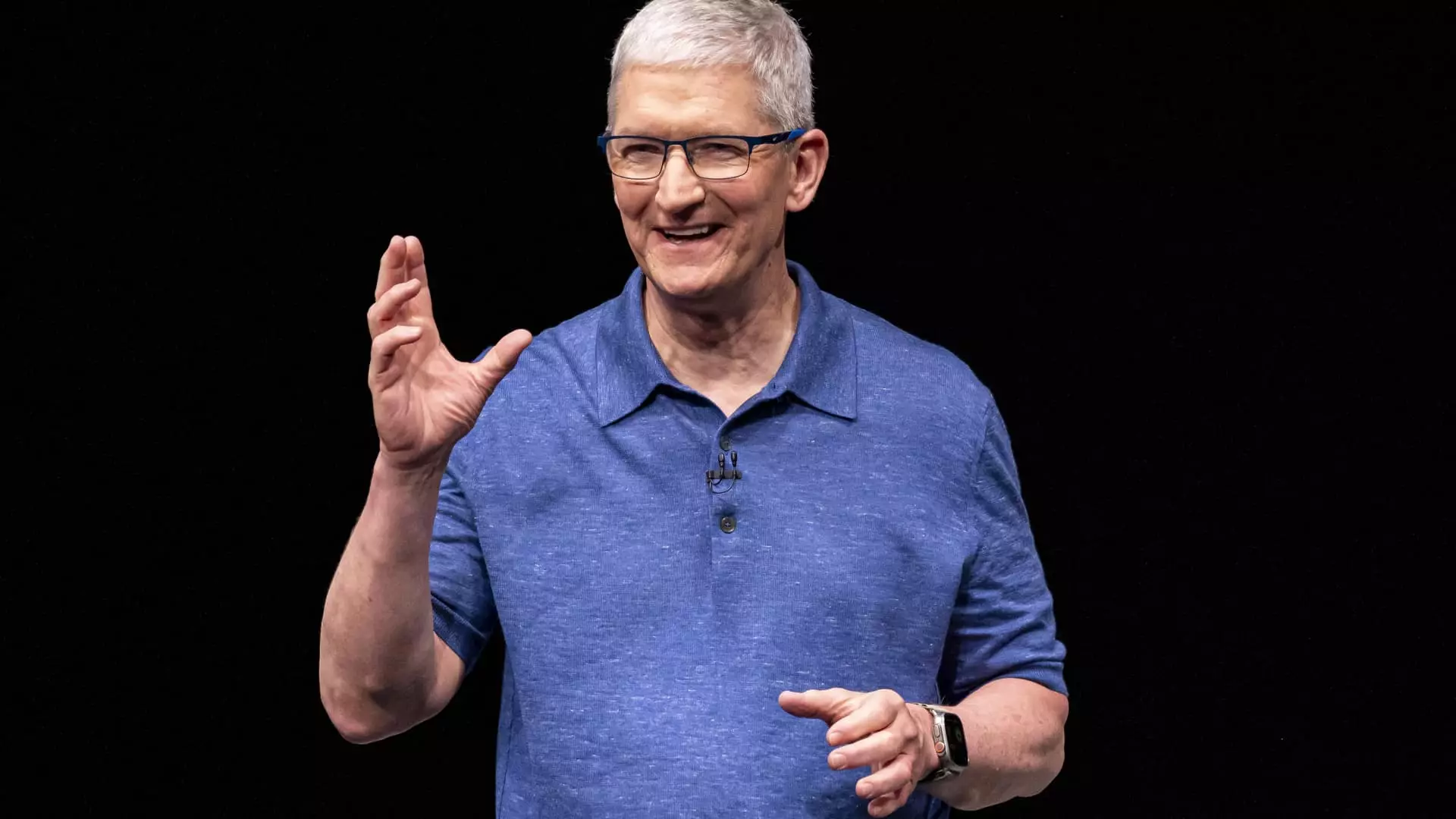The technology landscape is rapidly evolving, and companies are racing to remain at the forefront of innovation. Among the giants in the field, Apple has begun to embrace the artificial intelligence paradigm through its new Apple Intelligence features, including a much-anticipated integration with OpenAI’s ChatGPT. The beta release on Wednesday has prompted speculation on whether these advancements will drive user engagement and upgrade cycles for Apple devices.
Apple has been deliberately teasing its foray into AI technologies since announcing its grand plans this past summer. The gradual rollout of these features is a strategic choice, emphasizing quality and user experience over haste. Investors are keenly watching the situation; they expect that not only will these new capabilities enhance user engagement, but they may also stimulate demand for newer iPhones that support the full range of functionalities. As Apple positions its innovations within the ecosystem of its existing devices, the anticipated iOS 18.1 public release scheduled for next week is bound to be a pivotal moment for the company.
The beta version of iOS 18.2, unveiled on Wednesday, includes a host of features that reflect Apple’s ambition in the AI sector. New functionality such as text rewriting prompts users to interact more creatively with their devices, while image generation tools like Genmoji and Image Playground cater to the growing demand for personalized digital expression. The Image Wand feature enhances user creativity by enabling photo editing tasks such as object removal, seamlessly integrating artistic control into everyday smartphone use.
The ChatGPT Integration: A Paradigm Shift for Siri
Apple’s integration with ChatGPT signifies a notable evolution in how users can interact with Siri. This collaboration is emblematic of a broader shift in AI utilization—not just for quick answers but for more sophisticated interactions reliant on context. When users pose complex queries, Siri can now evaluate whether a response from ChatGPT would be more appropriate, demonstrating a sophisticated understanding of user needs and enabling a more nuanced conversation.
Importantly, this integration does not require users to hold an OpenAI account, thus lowering the barrier for engagement. Additionally, new features under the umbrella of Visual Intelligence promise exciting possibilities. From real-time translation of signs to contextual understanding, Siri can become more than just a virtual assistant; it can transform how users navigate the world around them through the lens of their devices.
The unveiling of these AI features has significant implications for Apple’s stock and its competitive landscape. OpenAI’s post-funding valuation underscores the tech world’s confidence in AI, which enhances the magnitude of Apple’s partnership with the organization. Analysts will surely watch closely as Apple sets out to leverage this partnership to garner more market share in the AI domain.
However, the absence of some anticipated features, such as Siri’s ability to take actionable steps within apps, raises questions about the speed of development. Apple executives hinted that it would come soon, but users are left eager and slightly wary about whether this delay could hinder the anticipated user experience.
At this point, Apple’s strategy also highlights potential future integrations with other AI models, including those from Google. This openness suggests that Apple does not intend to confine itself to a single partnership but instead aims for a more comprehensive AI ecosystem, which may ultimately foster wider adoption among its user base.
While the beta version of Apple Intelligence aligns with the tech industry’s current trajectory towards AI, its success rests on execution and the continuous refinement of user expectations. The initial features paint a promising picture, but sustaining long-term engagement will require Apple to innovate consistently and ensure that its technology remains accessible and beneficial for users.
Ultimately, Apple is positioned at a critical juncture. As it embraces the burgeoning AI landscape, potential users and investors alike will be watching closely to see whether the company can navigate this new frontier and solidify its status as a leader in innovation once again. The forthcoming public release could be transformative; it will likely set the pace for Apple’s trajectory in the AI arena and impact the broader technology market.

